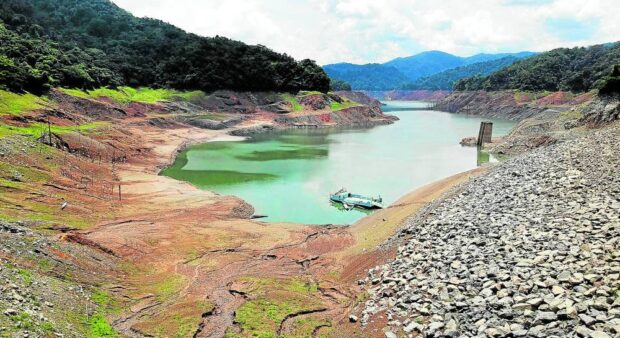Farmers warned as Central Luzon deals with dry spell, drought

INQUIRER FILE PHOTO / GRIG C. MONTEGRANDE
CITY OF SAN FERNANDO — The seven provinces in Luzon have already experienced a dry spell and a drought this month, and this situation is projected to last until March, prompting an official of the Department of Agriculture (DA) to urge farmers, as well as livestock and poultry growers, to prepare for the El Niño phenomenon.
“Although the [water] elevation in dams is high, it is better to stay prepared up to March,” Lowell Rebillaco, DA regional office focal person for disaster risk reduction and management, said at a briefing on Wednesday.
READ: El Niño’s grip forecast to bring devastating drought to 65 provinces – DOST
An area is experiencing a dry spell when rainfall is scarce for three months and a drought when rainfall is scarce for five months, he explained.
According to Rebillaco, the dry season in the country is occurring at the same time that El Niño, which is the unusual warming of surface waters in the eastern tropical Pacific Ocean, is happening. The wet season in the Philippines starts in May or June.
What is being watched are 18,919 hectares of farmlands in the region’s provinces of Aurora, Bataan, Bulacan, Nueva Ecija, Pampanga, Tarlac and Zambales, he said, noting that these lands were not planted during the 2016 and 2019 droughts.
READ: Marcos revives Task Force El Niño as threat of drought looms
Citing the outlook of the Philippine Atmospheric, Geophysical and Astronomical Services Administration (Pagasa), Rebillaco said a strong El Niño is expected to continue this month.
“But majority of global climate models suggest that El Niño will likely persist until the months of March, April and May 2024, with the transition to neutral in April, May and June,” he added.
Optimistic
According to Rebillaco, the DA is “optimistic” that farmers in the region can withstand the dry season because they can still get irrigation from dams and open sources like deep wells.
Angat Dam in Bulacan and Pantabangan Dam in Nueva Ecija reached normal high water levels on Tuesday, data from Pagasa monitoring showed.
But almost 90 percent of Angat Dam’s supply supports the drinking water needs of Metro Manila, with only 10 percent diverted to 30,000 ha of farms in Bulacan and Pampanga, National Irrigation Authority reports said.
Rebillaco said farmers had been tapping the aquifers and local waterways to cope with the dry spell.
The regional DA reported supporting areas not prone to drought by providing 205 units of pump and engine sets, 19,000 bags of hybrid yellow corn seeds, 140 bags of glutinous white corn seeds, 19,280 bags of inorganic fertilizers, assorted vegetable seeds and P45-million worth of fuel subsidies to 14,540 farmers.
To save production in drought-prone areas, the agency reported distributing 1,842 pump and engine sets to rice farmers, 410 sets to corn farms and 180 sets to high-value crop growers. It handed out 29,680 observation wells and distributed 32,800 bags of multistress rice seeds.
At least P170 million is available for crop insurance, Rebillaco said.
Impact
In Cagayan Valley region, rice farmer Marcelo Aguinaldo, 74, of Barangay Upi village in Gamu town, Isabela, expressed concern about the perceived impact of the drought on 69 provinces in the country.
“This early, we set aside some money to buy diesel for water pumps to irrigate our rice farms during the dry months,” Aguinaldo said in an interview.
Recounting the challenges of the last cropping season, he said they were rarely recovering expenses for seeds, fertilizers, pesticides, labor charges and other inputs.
“For a hectare of my farm, I spent over P80,000, barely covering my family’s needs,” he lamented.
Another farmer, Rolly Duran, 56, from Barangay Cullalabo Norte in Isabela’s Burgos town, described the drought as a “curse.”
“Again, we will spend more money than we expect to earn come the harvest season between March and April. We just pray hard to God that we will still earn something,” Duran added.
Isabela is the second largest province in the country, covering a land area of 1,066,456 ha. It is considered the rice bowl of northern Luzon and the corn capital of the country.
Data released by the DA Cagayan Valley in 2022 showed that Isabela ranked second to Nueva Ecija in annual average rice production from 2018 to 2020. Isabela produced an average of 1.1 million metric tons (MT) of rice annually while Nueva Ecija produced 1.2 million MT during this period. —WITH A REPORT FROM VILLAMOR VISAYA JR.